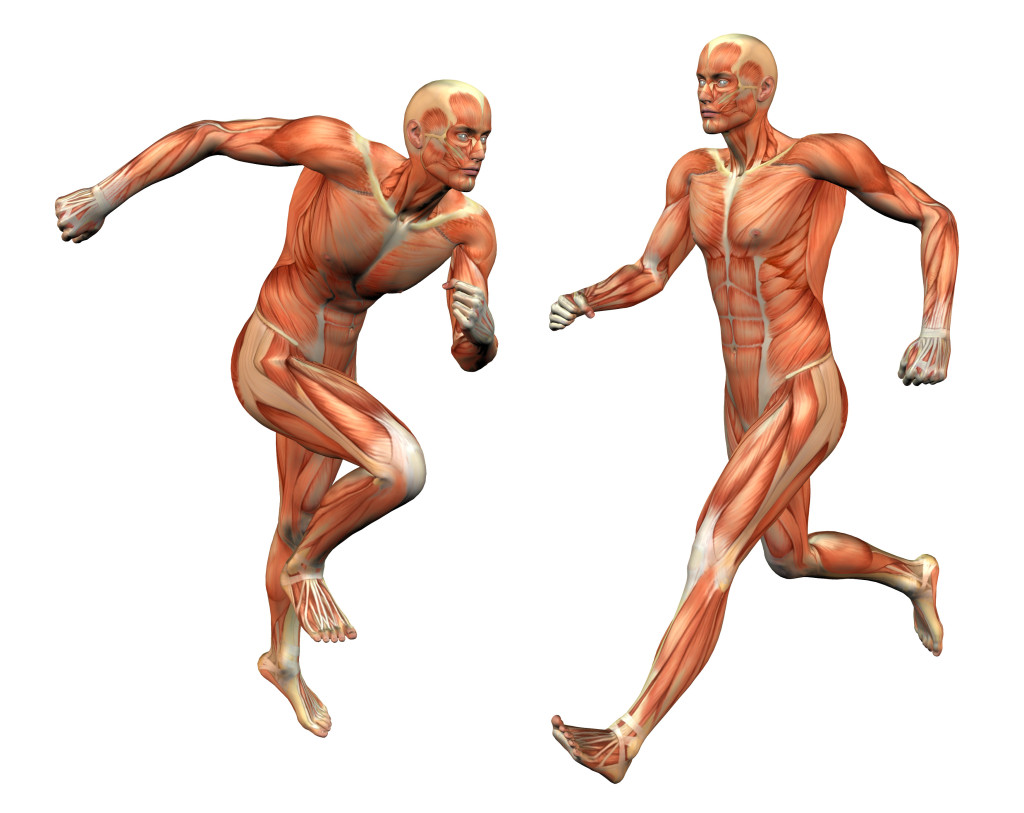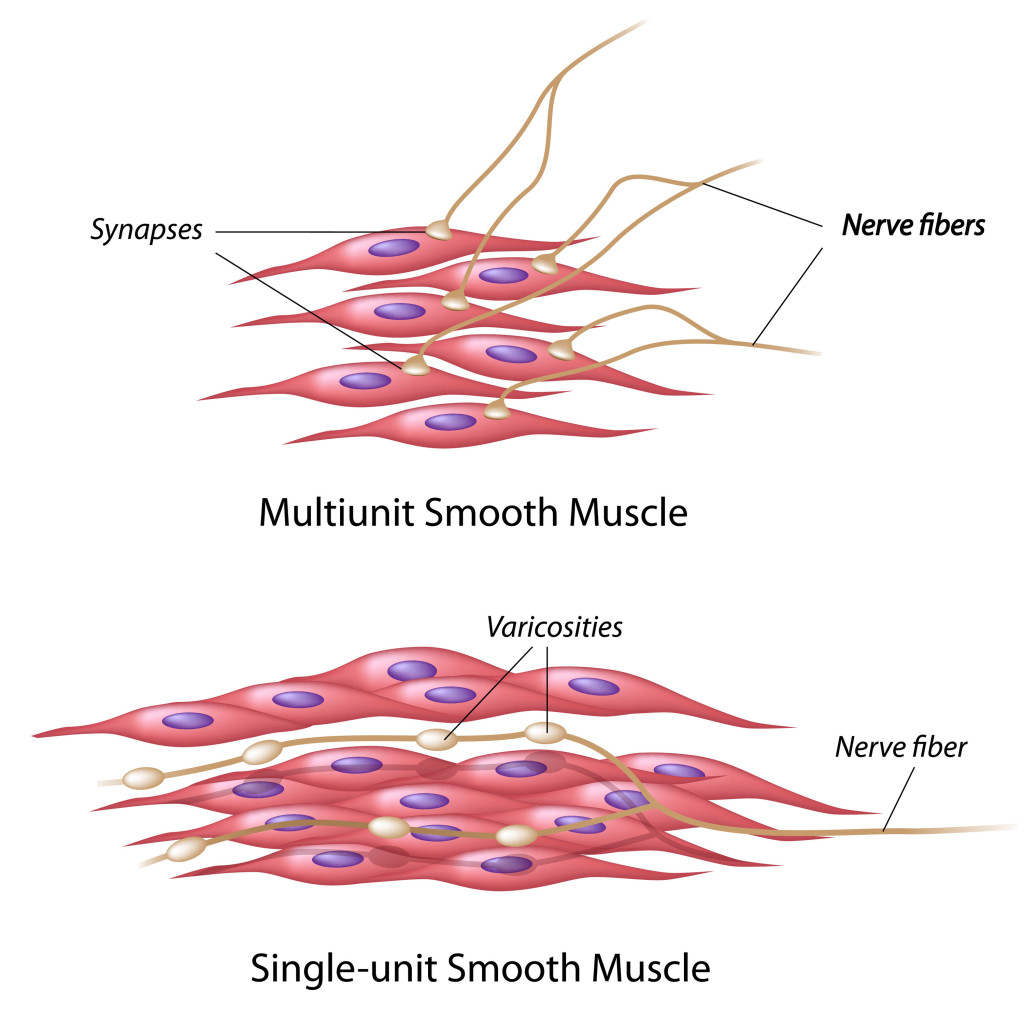The muscular system is one of the most fascinating aspects of the body. It consists of a variety of cells including neurons and muscle cells. Without it, we would not be able to function efficiently. It can be a complex system to understand, so I am going to lay out the basics while introducing you to some terms you might not have heard of.

Location and Locomotion of Muscles
There are two important terms to know when referring to location of muscles. The first is somatic, which refers to muscles that are directly associated with moving the body. These muscles can be controlled and are considered to be voluntary. An example of a somatic muscle would be the diaphragm.
The second type is visceral muscles. Visceral muscles include the blood vessels and gut, and they are usually smooth. Visceral muscles are not voluntary. Somatic vessels are usually, but not always, associated with the appendicular skeleton (the limbs) and visceral is typically associated with the axial skeleton (center of the body, or the axis.)
There are also different forms of locomotion related to muscles. The first type is saltational, which refers to having powerful legs and having forelimbs different from the hindlimbs. An example would be a cat or dog. The next type is cursorial, which means that the organism has no real muscles in the fingers and toes. Humans would be an example of this.
Finally, there is aerial locomotion. These organisms, such as birds, have a reduced spine and more bone fusion. Otherwise, birds would constantly be working against themselves and would not be efficient fliers. Organisms may not belong to only one category, but may belong to more.
Cell Types: What Makes Them Unique?

The types of muscle cells are very interesting because there are many similarities, but there are also many differences. Smooth muscle is the most unique because it has very little in common with the other types. It is weaker and less organized. Smooth muscles can be found in your stomach and intestines.
Like cardiac muscle cells, contraction of smooth muscle is involuntary and uninucleate. Cardiac muscle cells have a few unique characteristics including automaticity and autorhythymicity. Automaticity means that the single cells of the heart are able to contract on their own and autorhythymicity means that the contractions of the cells are synchronous.
Furthermore, cardiac muscle cells also have intercalated disks, or desmosomes, that allow the cells to stick together. Skeletal muscle cells and cardiac cells have striations (or divisions) but that is where the similarities end. When you think of muscles, the image that comes to mind is most likely a skeletal muscle. These muscle cells are long and have many nuclei. An example of a skeletal muscle would be your triceps and biceps.
Muscle Anatomy and Contractions Made Simple
Muscle contractions are controlled by the muscle fibers, which are composed of muscle cells. One important thing to remember about these fibers is that strength is not equal at all lengths. In general, shorter muscles are stronger. Length allows speed, which is a result of the sarcomeres (functional unit of the muscle cell) contract at the same speed, but a long muscle, such as in your legs, can cover a larger distance in a short amount of time.
Insertion of the muscle also has an impact. If the insertion is distal (farther from the body’s axis) the muscle is stronger but slower. Likewise, if the insertion is proximal (closer to the body’s axis), the muscle will act faster, buy will not be as strong. A stimulation frequency exists that allows muscles to only use the amount of energy that is needed.
Muscle contractions begin in the central nervous system, and this applies for voluntary and involuntary movement. This causes a motor neuron (a nerve cell specific to movement) to activate. The axon of the neuron carries a signal (called an action potential), which is taken to the ends of the muscle fibers.
Next, a neurotransmitter called acetylcholine (or ACH) is released and causes the action potential to travel through the muscle fibers. Finally, calcium ions are released, which triggers troponin and tropomyosin to move along the fibers. All of these steps lead to the contraction of a muscle. It is also important to remember that all muscle types contract in a similar manner.
Muscles also exhibit something called fused tetanus. This term is used to describe a muscle that is unable to relax between impulses. The contraction steps are complicated, but this gives you the most important information about how muscles allow us to move.
Now, you have all the basic knowledge of the muscular system and probably some information you may not have known. The subtle differences between cell types and locomotion are part of what makes the system interesting, and efficient. I hope you enjoyed reading and learned something new.
